Prepare yourself to add excitement and flair to your salsa-making endeavors with the absolute finest tomatoes available in the local area! We generously divulge our ultimate selections for the most succulent and delectable tomatoes to elevate your salsa to an entirely different echelon.
With their impeccable fusion of sweetness and acidity and an irresistible explosion of invigorating freshness, these tomatoes possess the clandestine component that will undoubtedly illuminate and enhance the brilliance of your salsa creation.
What is the best tomato to use for salsa?
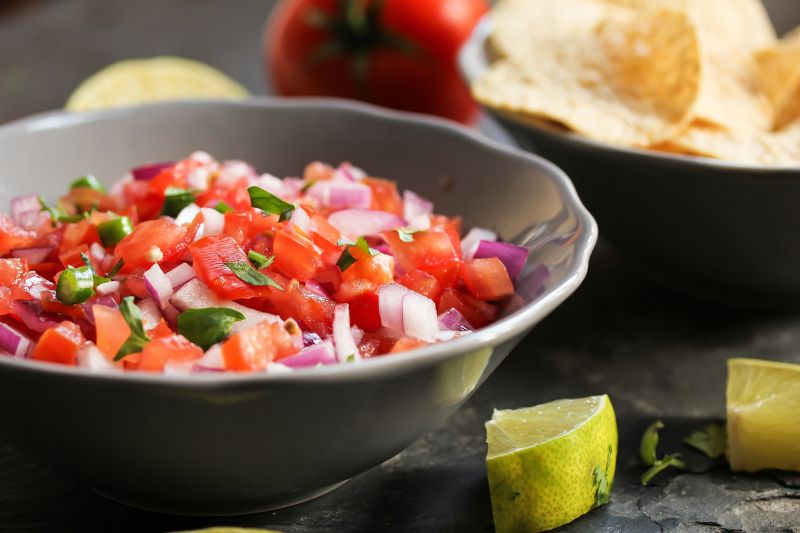
When selecting the perfect tomatoes for your homemade salsa, it is highly recommended to go for paste tomatoes.
These particular tomatoes possess a wonderful fleshy texture and contain less juice and fewer seeds than other tomato varieties, making them an excellent choice for this culinary pursuit.
One of the advantages of using paste tomatoes in salsa making is that their low juice content allows them to cook down quickly. While this may not be crucial for salsa preparation, it can be valuable knowledge for future endeavors, such as crafting a delectable tomato sauce.
To assist you in your quest for the best tomatoes for salsa, here are some of the most popular types that are commonly used:
- Roma tomatoes: Known as plum tomatoes, Romas are characterized by their small, slender size and firm texture. These delightful tomatoes contain only a few seeds and are incredibly easy to cut without creating a messy situation.
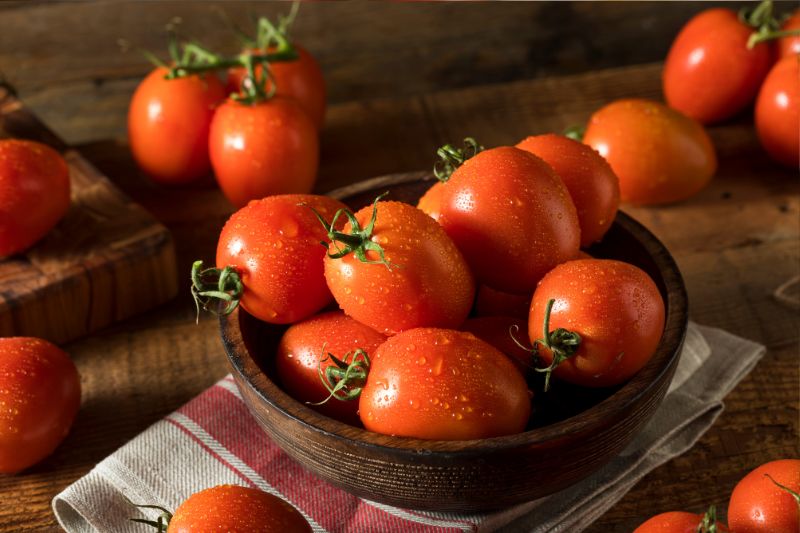
- Little or Big Mama tomatoes: For those seeking variety, both Little Mama and Big Mama tomatoes are worth considering. Little Mama tomatoes are miniature versions of Roma tomatoes, offering the same meaty texture and low seed count. On the other hand, Big Mama tomatoes are among the most giant paste tomatoes available, ensuring ample tomato goodness to work with.
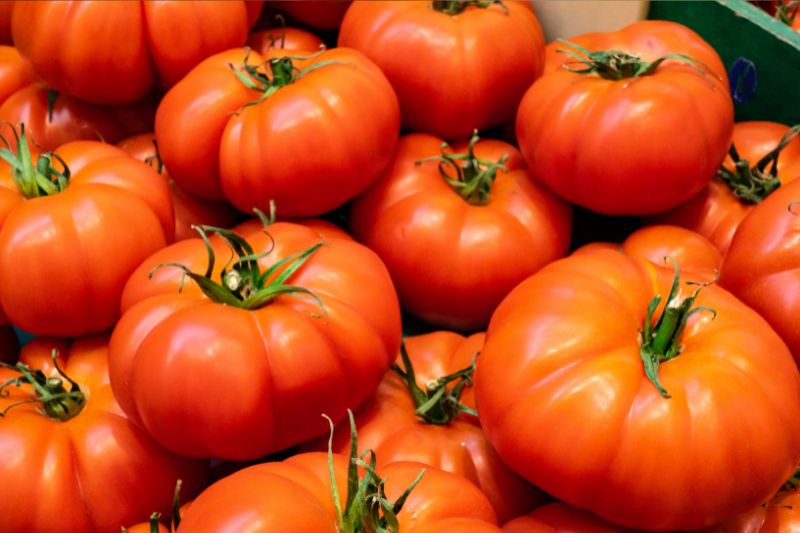
- Amish Paste tomatoes: Similar to Roma tomatoes in many ways, Amish Paste tomatoes have a slightly sweeter flavor profile. These tomatoes provide a delightful twist to traditional salsa recipes while maintaining the paste tomatoes’ desirable characteristics.
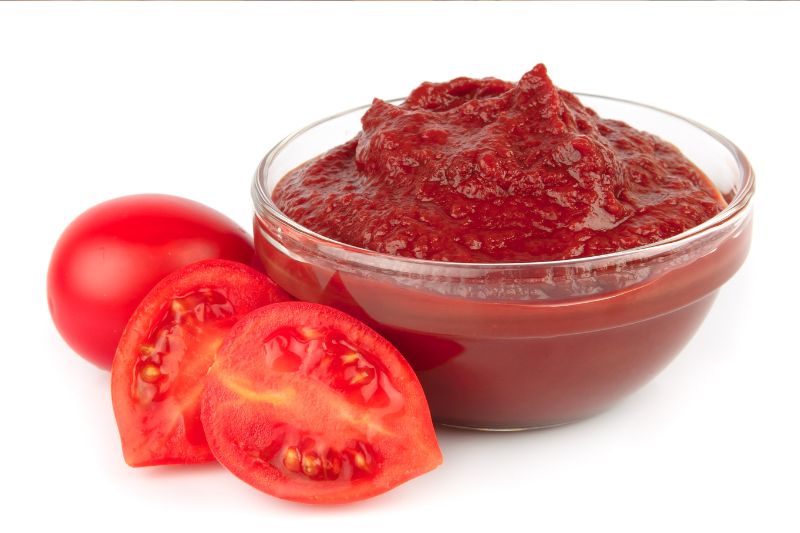
Regardless of which type you ultimately decide to go with, selecting tomatoes that appear ripe and healthy is always essential. Be sure to avoid any fruits that show signs of bruising or browning, as these imperfections may affect the quality of your salsa creation.
Are fresh or canned tomatoes better for salsa?
In my personal experience, I have found that when it comes to dishes involving tomatoes, such as salsa, spaghetti sauce, cabbage rolls, and more, using canned whole tomatoes is the way to go.
While fresh tomatoes are a great option for salads and other recipes that call for their vibrant flavor, it’s important to note that the “fresh” tomatoes you find at the supermarket are often picked when they are still green and firm.
On the other hand, canned tomatoes used for canning purposes are typically picked at the peak of ripeness, ensuring a more flavorful and delicious end result. This is why I prefer using canned whole tomatoes for my culinary creations.
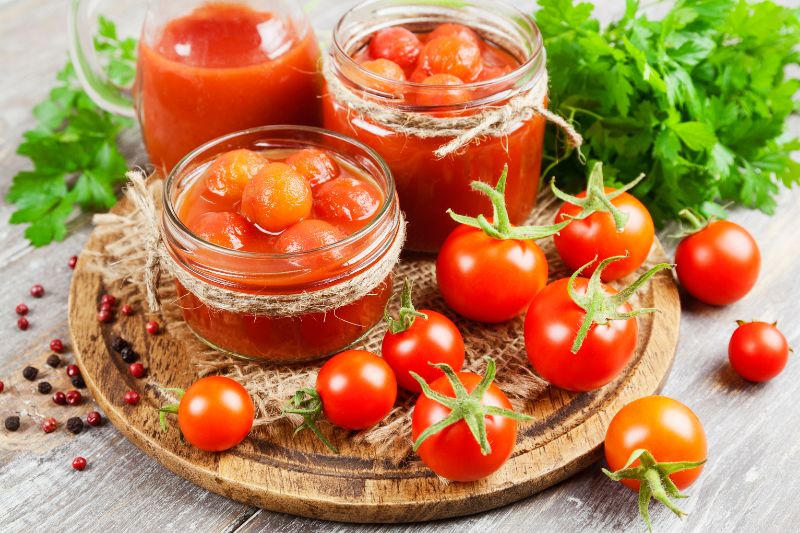
Canners generally select the highest quality fruits for their whole-canned offerings, reserving the lesser quality ones for diced, stewed, crushed, or puréed products where any imperfections may go unnoticed by consumers.
When I make salsa or spaghetti sauce, or any other dish that calls for tomatoes, I opt for organic canned whole tomatoes.
I then take the extra step of dicing them with a knife on a cutting board, allowing me to control the texture and consistency of the final product. Depending on the specific recipe I’m working with, I may or may not include the juice from the can.
what are the best tomatoes for chunky salsa or pico de gallo?
For a chunky salsa, commonly referred to as pico de gallo, it is recommended to choose tomatoes that are easy to slice and dice, such as beefsteak, big beef, and big yummy.
These varieties, also known as “slicing tomatoes,” are meaty and easy to remove seeds from, which is important to avoid a watery salsa.
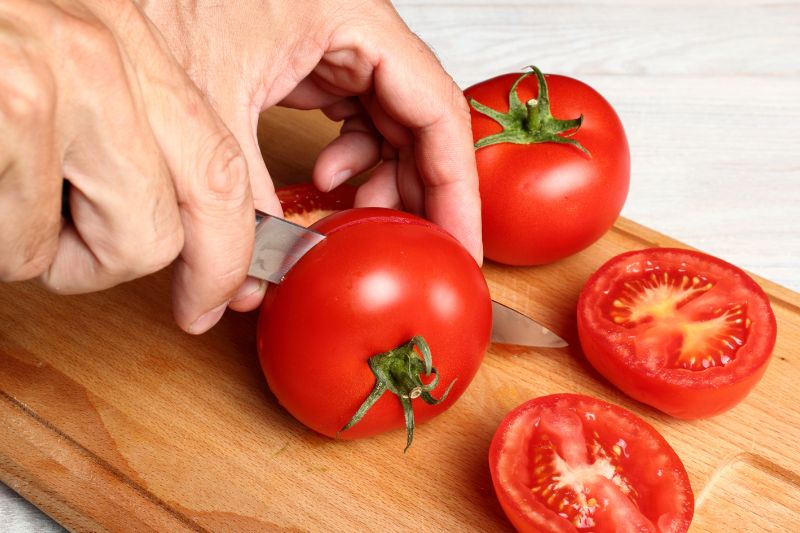
Additionally, their larger size allows for a higher yield, making them ideal when preparing loaded nachos for a large group.
Roma tomatoes, categorized as “paste tomatoes,” are also a great choice for pico de gallo. With their dense flesh, fewer seeds, and lower water content, Roma tomatoes are perfect for creating chunky salsas.
What are the best tomatoes for restaurant-style salsa?
When it comes to restaurant-style salsas, also known as salsa roja, there are many options available to achieve a smoother, more dip-like consistency compared to pico de gallo.
The great thing about making salsa roja is that you have a broader range of tomatoes to choose from. In fact, almost any type of tomato can be used!

Unlike pico de gallo, where the amount of water or seeds can make a difference, salsa roja ingredients are all blended together, so those factors don’t matter as much.
However, if you prefer a thicker consistency for your salsa, using Roma tomatoes or other tomato paste can be a good choice. These tomatoes tend to have less water content and more flesh, resulting in a denser texture.
Ultimately, the choice is yours and experimenting with different types of tomatoes can lead to delicious variations of salsa roja.
What are the best tomatoes for canning and salsa?
The tomato you use in your salsa will affect the salsa quality.
- Italian plum-style or paste tomatoes like Roma have firmer flesh and produce a thicker salsa.
- Slicing tomatoes produces a thinner, more watery salsa. If you use slicing tomatoes, you can thicken your salsa by adding tomato paste or draining off some of the liquid after you chop the tomatoes. Never add flour or cornstarch to salsa before canning because an unsafe product may result.
- Choose fresh, firm tomatoes at their peak ripeness. Use tomatoes free of bruises, cracks, disease, or insect damage. Soft, overripe tomatoes with bruises, cracks, blossom end rot, mold, insect damage, or harvested from dead or frost-killed vines can alter the acidity level of the entire batch and make it unsafe. Diseased or bruised produce may harbor pathogens. The processing time may not be sufficient to kill extra organisms in damaged or diseased produce.
- Dried and canned tomatoes can be used.
- Roasting tomatoes and including some of the roasted skins adds another flavor.
Selecting the right tomatoes for your salsa recipe
Acidity
When it comes to the edge of tomatoes, it’s essential to consider your personal preference. Selecting a tomato with higher acidity levels would be ideal if you enjoy a tangy flavor. On the other hand, if you prefer a sweeter taste, it would be wise to steer clear of the more acidic tomato options to achieve that desired sweetness.
Sweetness
It’s fascinating to note that tomatoes can vary in sweetness! Suppose you happen to be creating a salsa that incorporates fruit. In that case, I strongly suggest a tomato variety that leans towards the sweeter side, such as the delightful cherry tomato. This will undoubtedly enhance the overall flavor profile of your salsa and add a delicious touch of sweetness.
Texture
Regarding surface, different types of tomatoes offer unique qualities. For instance, plum tomatoes are known for their firmness, making them a fantastic choice for those chunky salsas that require a bit of bite.
On the other hand, if you’re aiming to recreate the mouthwatering experience of a restaurant-style tomato, opting for a beefsteak tomato would be wise, as its softer texture lends itself perfectly to that desired outcome. Selecting the appropriate tomato variety based on the surface can elevate your culinary creations.
How to Make and Store Fresh Salsa
This homemade salsa recipe is straightforward to prepare. All you need are some ripe, juicy tomatoes that have been expertly chopped up, some flavorful chiles, zesty onions, aromatic cilantro, a splash of tangy lime juice, and a medley of carefully selected seasonings.
This salsa uses fresh ingredients to burst with vibrant flavors and textures that will tantalize your taste buds. However, it’s important to note that due to the nature of the fresh components used in this recipe, it is best enjoyed immediately after being made.
If you prefer a cooler salsa, storing it in the refrigerator will keep it fresh for approximately five days, allowing you to savor its delightful taste for an extended period.
Recipe Fresh Salsa (Pico de Gallo)
- PREP TIME: 15 minutes
- TOTAL TIME: 15 minutes
- SERVINGS: 12 to 16 servings
- YIELD: 3 to 4 cups
Here is a revised version of the recipe:
Ingredients:
- 2 to 3 medium fresh tomatoes (approximately 1 to 1 1/2 pounds), stems removed
- 1/2 medium red onion
- 2 serrano peppers or 1 jalapeño pepper, stems, ribs, and seeds removed (adjust amount to taste)
- Juice of 1 lime
- 1/2 cup chopped cilantro
- Kosher salt and freshly ground black pepper, to taste
- A pinch of dried oregano (crumble it in your fingers before adding) or more to taste
- A bit of ground cumin, or more to taste
Method
Prep the ingredients
- Begin by roughly chopping the tomatoes, chile peppers, and onions.
- Take caution when handling the chile peppers. You can use a plastic baggie or disposable gloves to protect your hands. Alternatively, thoroughly wash your hands with soap and hot water after handling the peppers, and avoid touching your eyes for a few hours.
- Remember to set aside some of the seeds from the peppers. If the salsa is not hot enough, add a few sources to increase the heat level.
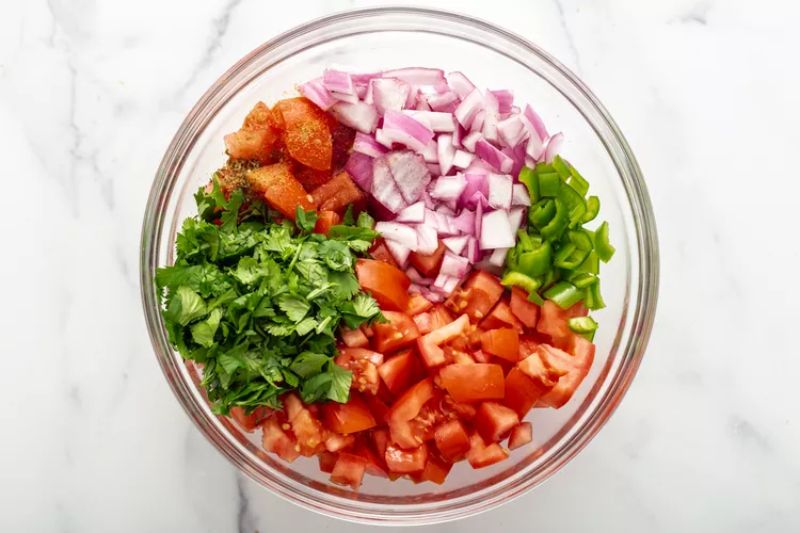
Make the salsa
To make the salsa, follow these steps:
- Gather all the ingredients.
- Place all of the ingredients in a bowl.
- If you have a food processor, fit it with the blade and pulse the ingredients a few times until they are finely diced but not pureed.
- If you don’t have food, finely dice ingredients by hand.
- Mix the diced ingredients well in the bowl.
- Your salsa is now ready to be enjoyed!

Adjust seasonings
- Transfer the salsa to a serving bowl.
- Season with salt and pepper according to your taste.
- If the salsa is too hot from the chiles, add chopped tomato.
- Add a few chile seeds or more ground cumin if the salsa is not spicy enough.
- Optionally, allow the salsa to rest for an hour at room temperature or in the refrigerator to allow the flavors to meld together.
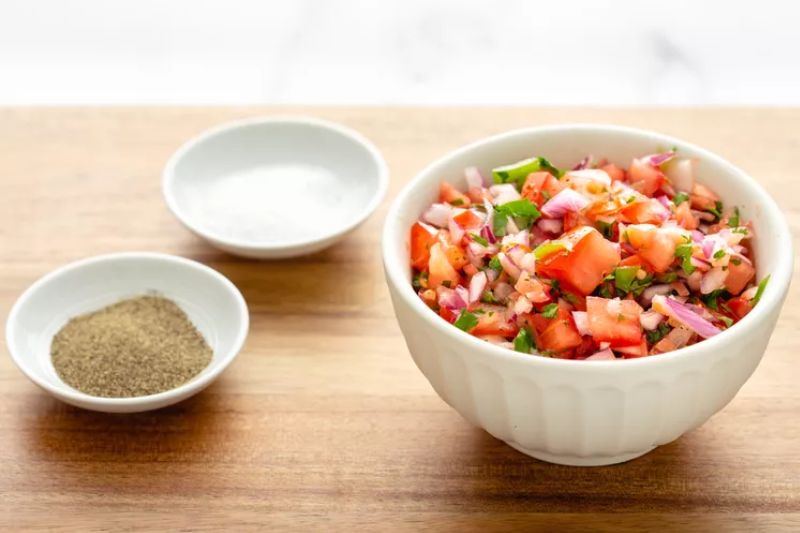
Serve
- You can serve this delicious salsa with a variety of options such as crispy and savory chips, warm and pliable tortillas, flavorful tacos, mouthwatering burritos, crunchy tostadas, cheesy quesadillas, or alongside a side of either pinto or black beans.
- It’s a versatile condiment that pairs well with a range of dishes.
- Don’t worry about leftovers; the salsa can be stored in the refrigerator for up to 5 days, maintaining its freshness and taste.
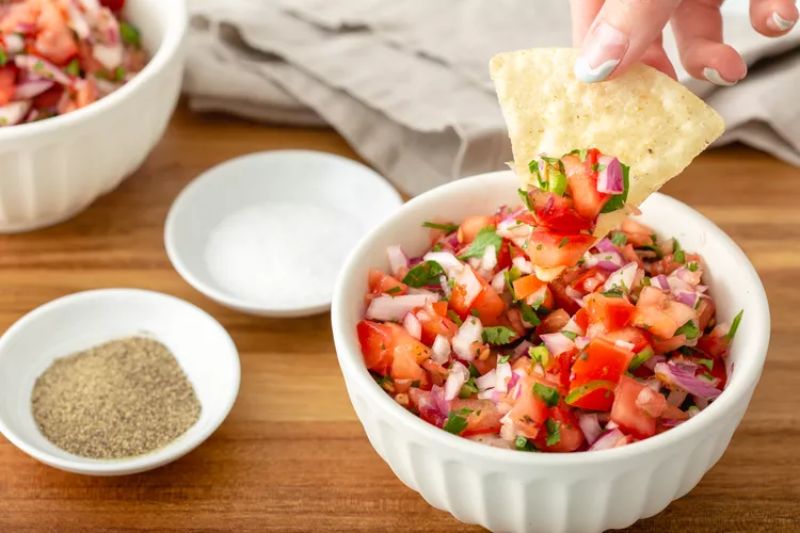
NUTRITION FACTS (PER SERVING)
| Nutrition Facts | Amount per serving |
|---|---|
| Servings | 12 to 16 |
| Calories | 7 |
| Total Fat | 0g |
| Saturated Fat | 0g |
| Cholesterol | 0mg |
| Sodium | 20mg |
| Total Carbohydrate | 2g |
| Dietary Fiber | 0g |
| Total Sugars | 1g |
| Protein | 0g |
| Vitamin C | 5mg |
| Calcium | 5mg |
| Iron | 0mg |
| Potassium | 72mg |
The % Daily Value (DV) tells you how much a nutrient in a food serving contributes to a daily diet. 2,000 calories a day is used for general nutrition advice.
Do you leave tomato seeds in salsa?
If you prefer chunky salsa, removing the seeds for a thicker consistency is recommended. Conversely, leaving the roots intact would be suitable if you desire a thinner salsa.
Using just one jalapeño pepper would suffice for a milder salsa while opting for two jalapeños would provide a medium heat level.
If you plan to serve the salsa alongside salty tortilla chips, it is advisable to exercise caution when adding salt to avoid over-salting the overall dish.
Do you have to core Roma tomatoes for salsa?
To ensure that your salsa remains free from excess water and loses its texture, it is crucial to take the necessary steps to eliminate the core and seeds from the tomatoes.
Here is a simple guide on how to accomplish this: Begin by employing a serrated knife to cut the tomatoes in half lengthwise, then divide them into quarters.
With careful precision, slide the blade along each quarter, diligently extracting the inner seeds and the white core.
Should you peel tomatoes for salsa?
When deciding whether to keep the skins on or off your tomatoes, it ultimately boils down to personal preference and the amount of time you have available. The great thing is that tomato skins are edible, so you don’t need to peel them.
If you’re whipping up a delicious batch of chunky salsa, leaving the skins on can add some extra texture to the mix, as long as the slight chewiness doesn’t bother your taste buds. So, whether you embrace the skins or prefer a smoother texture, the choice is yours.
Finally
If you find this comprehensive guide to selecting the best tomatoes for making delicious salsa to be informative and valuable, we kindly request that you take a moment to share this post or express your thoughts by leaving a comment. We greatly appreciate your support and engagement!
Additionally, please don’t hesitate to ask any questions you may have regarding tomato selection or salsa preparation. We are committed to providing prompt and helpful responses to each and every comment we receive. Your feedback is highly valued and we strive to provide you with the best possible assistance!

